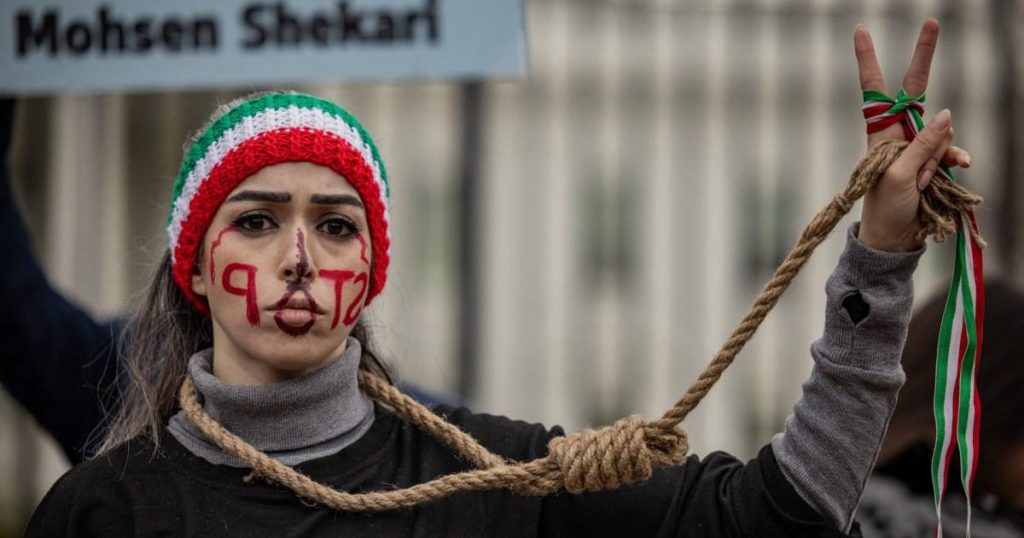The Iranian regime’s escalating use of the death penalty has reached a chilling new milestone, with 2024 witnessing the highest number of women executed in a single year since the United Nations began tracking these grim statistics 17 years ago. Thirty-one women officially perished at the gallows, a number believed to be significantly understated due to the clandestine nature of many executions carried out by the state. This surge in state-sanctioned killings underscores the regime’s brutal repression of the “Woman, Life, Freedom” movement, a nationwide uprising sparked by the death of Mahsa Amini in police custody in 2022. The movement, advocating for women’s rights and fundamental freedoms, has been met with a violent crackdown, with the death penalty increasingly wielded as a tool of intimidation and control.
The executed women represent a cross-section of Iranian society, but a recurring theme emerges from their stories: they are victims of a system characterized by deep-seated gender inequality and discriminatory practices. Many were convicted of murdering their husbands, often after enduring years of domestic abuse or being forced into marriage as children. Their desperate acts of self-preservation were met not with compassion or understanding, but with the harshest punishment imaginable. These executions highlight the tragic irony of a system that claims to uphold Islamic law while systematically failing to protect the most vulnerable members of society. Instead, the judicial system becomes complicit in perpetuating a cycle of violence and oppression, silencing the voices of women who dare to challenge their subjugation.
Beyond the official figures lies a hidden toll of untold suffering. The Iran Human Rights organization reports that at least 241 women were executed between 2010 and 2024, with a significant number remaining anonymous or identified only by initials. This lack of transparency shrouds the true extent of the regime’s brutality and hinders efforts to hold it accountable. The organization further reveals that a disproportionate number of these women were sentenced to death for murder, often in cases related to domestic violence, and drug-related offenses, suggesting a systemic bias against women in the application of the death penalty. The stories of these women, often obscured by the regime’s secrecy, represent a damning indictment of Iran’s human rights record and its treatment of women.
The execution of women in Iran is not merely a reflection of the regime’s brutal nature but also serves as a stark reminder of the pervasive gender discrimination embedded within the judicial system. The “gender apartheid” that characterizes Iranian society places women in a subordinate position, limiting their legal rights and protections while simultaneously subjecting them to harsher penalties for similar crimes committed by men. This systemic inequality permeates every aspect of their lives, from the personal to the political, and culminates in the disproportionate application of the death penalty. The stories of these women, often lost in the larger narrative of political repression, expose the deep-rooted misogyny that fuels the regime’s actions.
The staggering number of executions in 2024 – 901 in total, including the 31 women – marks the highest annual figure since 2015, when 972 people were put to death. This alarming trend points to an escalating campaign of repression by the Iranian authorities, using the death penalty to stifle dissent and maintain their grip on power. The “Woman, Life, Freedom” movement, while posing a significant challenge to the regime, has also become a pretext for intensified crackdowns, resulting in a surge in arrests, sham trials, and ultimately, executions. The regime’s escalating use of the death penalty serves as a chilling reminder of the fragility of human rights in Iran and the lengths to which the authorities will go to suppress any perceived threat to their authority.
The plight of women on death row in Iran remains a critical concern. An unknown number await their fate, their lives hanging precariously in the balance. Among them are Kurdish activists like Varisheh Moradi and Pakhshan Azizi, whose cases highlight the intersection of gender and political activism in the regime’s targeting of dissidents. These women, and countless others like them, are symbols of the ongoing struggle for human rights and freedom in Iran. Their stories, while often hidden from the world, serve as a testament to the resilience of the human spirit in the face of oppression and a call for international action to hold the Iranian regime accountable for its egregious human rights violations. The international community must not remain silent in the face of this ongoing injustice and should exert pressure on Iran to abolish the death penalty and uphold its international human rights obligations.




